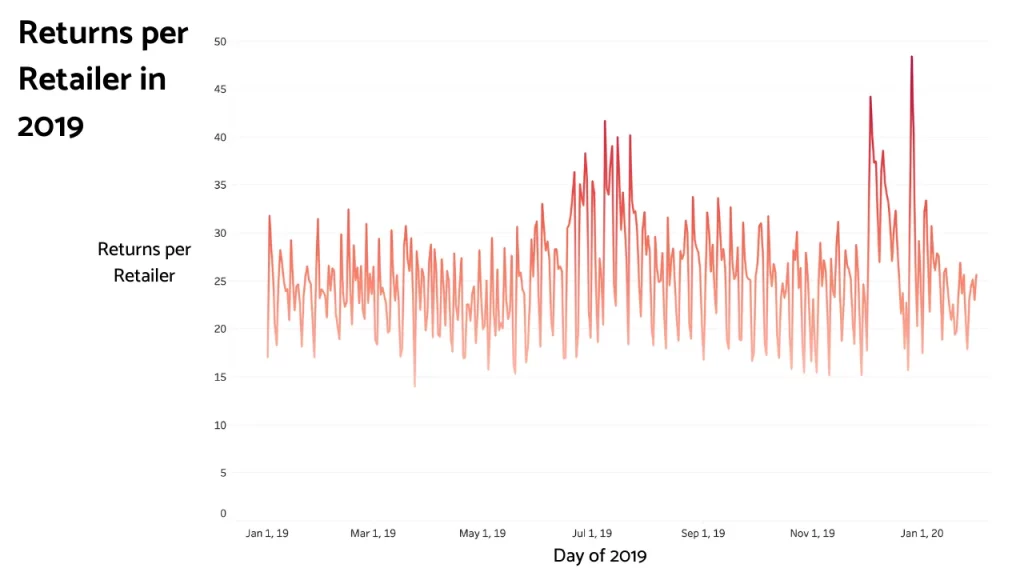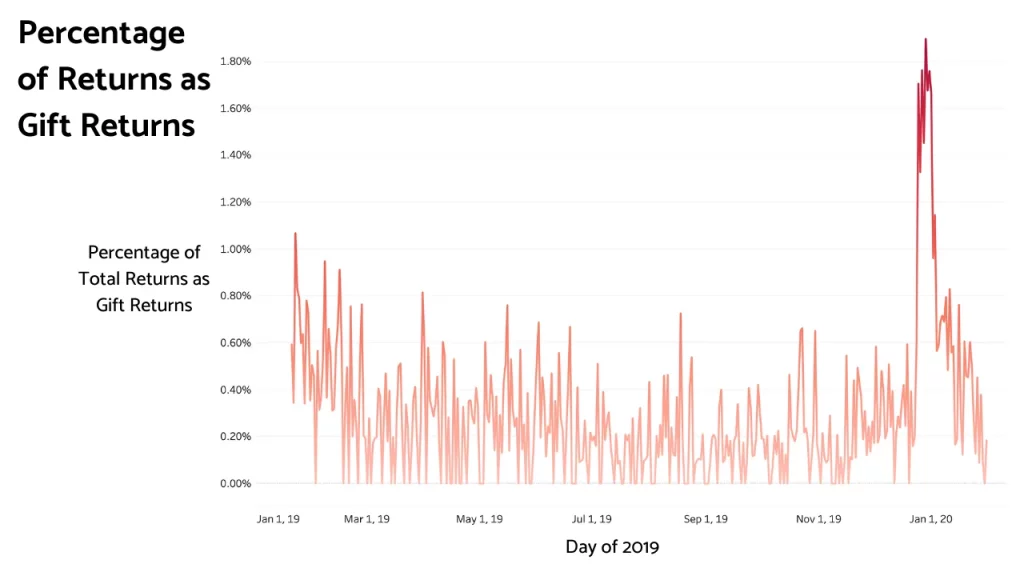Handling the Seasonal Rise of Gift Returns in Ecommerce

Despite the adversity this year has brought, the holiday season is an incredible time in ecommerce.
Retailers strive to put their best foot forward with product launches, exclusive offers, and special events.
Consumers scour stores and the web, looking for the perfect gifts for their loved ones and for themselves. Last year, the average American spent around $1500 during the holiday holiday season, with likely more than half of the sum going toward gifts.
This year, Deloitte predicts an overall increase in spending of 1.5% through the months of November to January, compared to last year. This would amount to roughly $1.15 trillion.
Driving that is a projected 35% increase in ecommerce holiday spending.
All signs point to a remarkable volume of returns – in particular, gift returns.
The Story of Holiday Returns
Managing holiday returns can prove to be quite the challenge.
In 2019, both of the two days with the greatest values of returns per retailer for ReturnLogic partner brands occurred in December: the Tuesday following Black Friday, and December 26th.

There is simply no escaping the fact that the holiday season brings a surge of returns. In fact, January 2nd has been dubbed National Returns Day.
While gift returns never comprise the majority of returns, they also spike dramatically around the holidays.

The range from December 25th to January 3rd saw, by far, the highest percentage of all returns coming from gift returns.
And, depending on product market, they can add up quickly.
Among categories such as fashion & apparel, home, or fitness, gift returns came account for anywhere between 20% to 50% of daily returns in the holiday season.
We know that gift returns can be far more intricate and labor-intensive than other returns.
The gift recipient often does not have the information they need to start a return, such as the order history and product information. So, they are traditionally forced to contact your customer service team to begin a return.
The customer service representative then either has to investigate the purchase to find the relevant information, trust the gift recipient enough to allow a return with no details, or ask the recipient to go through the gift giver.
Frankly, none of these are great options for you or your customers.
Gift Returns Made Seamless
Our approach to gift returns empowers the gift recipient to create their own return, removing the need for customer service to get involved, and preventing awkward conversations between the gift recipient and giver.
With our software, gift recipients are able start returns on their own, with nothing other than information from the package.
They simply update the email and shipping address to reflect their own, and that the gift giver never sees any sign of a return.
The gift recipient then sends the product back for either an exchange or store credit. Cash from the sale is kept within your business, and hopefully, a new customer is won over.
No more investigative tasks for your customer service team, and the gift giver never has to know.
The Gift that Keeps on Giving
An effective returns management process is pivotal to sustaining growth in ecommerce.
Perhaps no event can be as divisive to the customer relationship as a return. On top of that, the operational inefficiencies created by returns can quickly overload both your customer service and warehouse teams.
This is especially true with gift returns. Gift returns are a notorious and complex challenge of the holiday season, that create excess tasks for retailers while creating friction among gift recipients and givers alike.
But with a better returns management strategy, you can stay on top of holiday returns and instill more joy among your customers.






